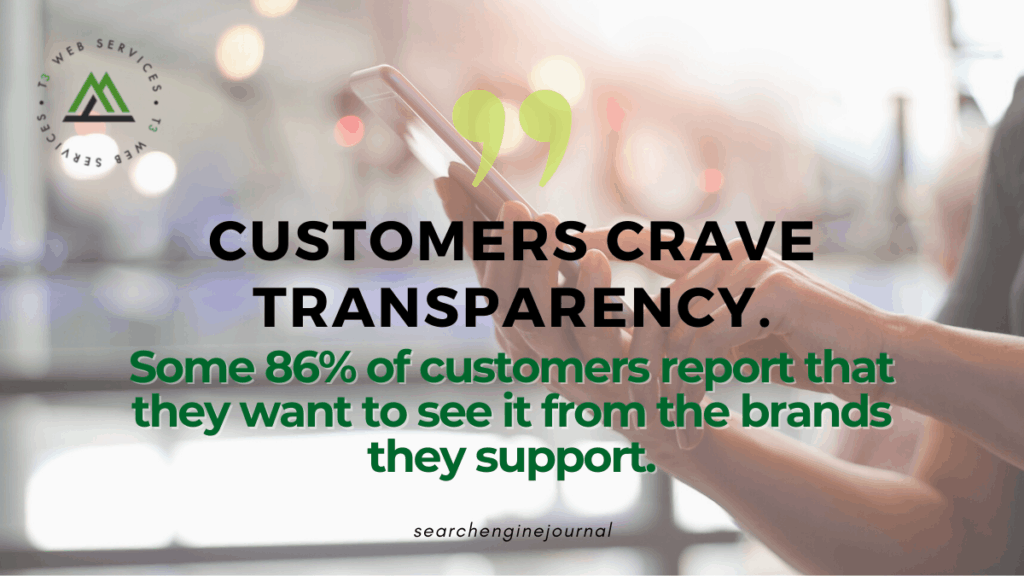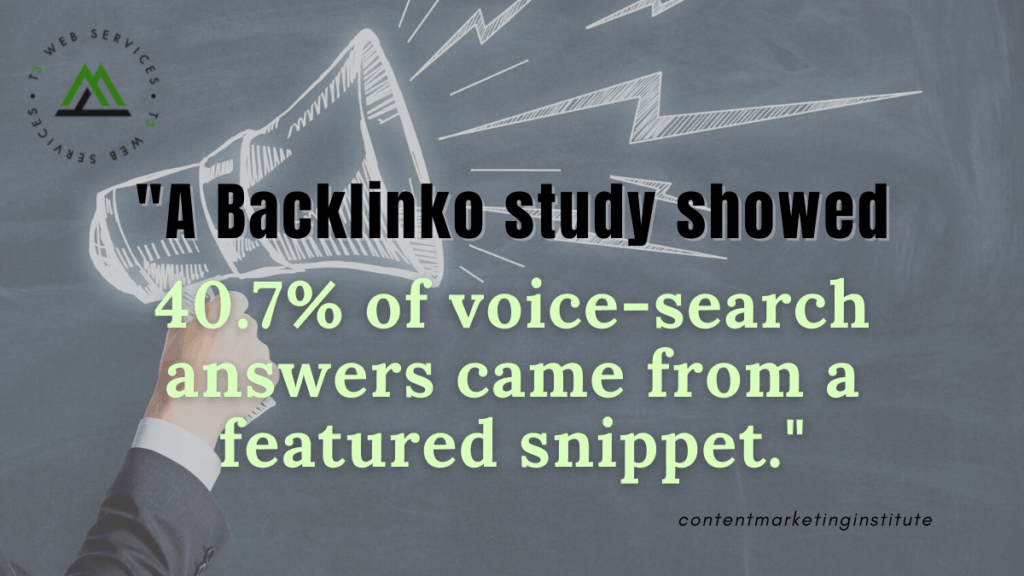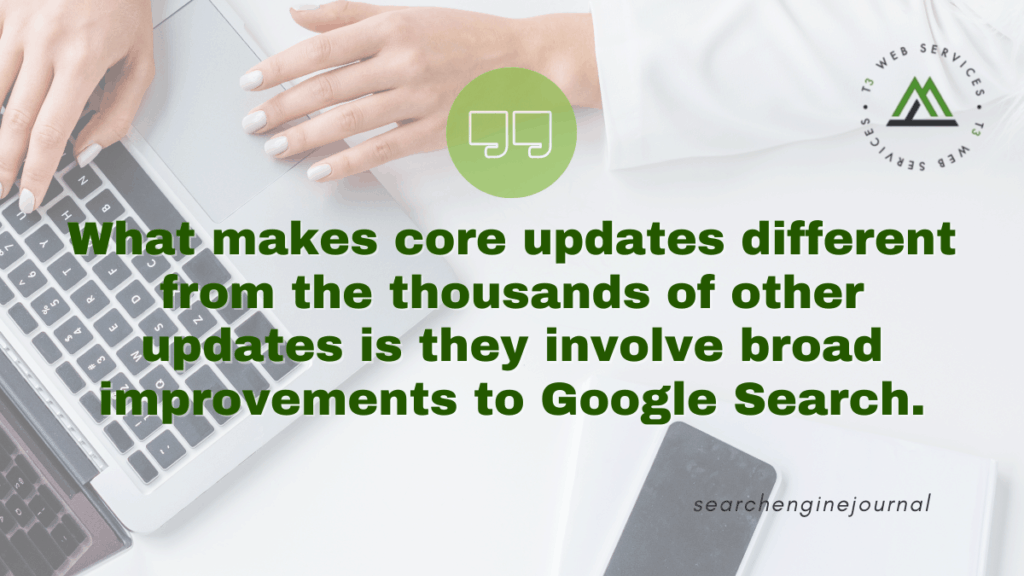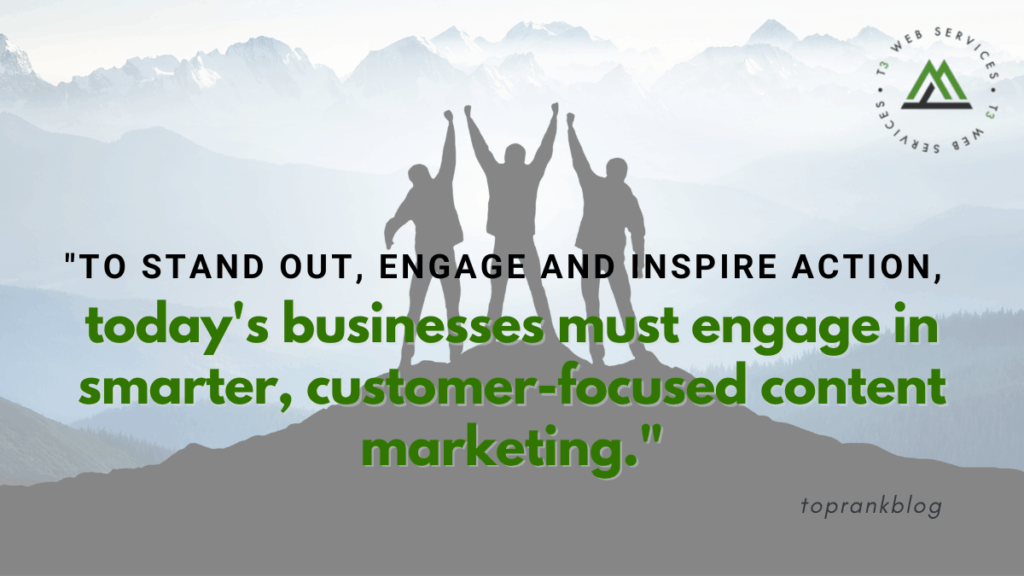Google has all of the power when it comes to search engine rankings. They use a framework called E-A-T (Expertise, Authoritativeness, and Trustworthiness) to assess webpages and content creators. Google wants to make sure that sites producing high quality content are rewarded with better rankings while sites creating low quality content get less visibility. One way you can tell if your site is high quality is by looking at how long it takes for your website to load on a mobile device. If users have trouble loading your site, they will be more likely to click away from the page before reading any of your content which means you won’t rank as well in Google’s algorithm! For this week’s post we have rounded up some resources on how to rank higher on Google and help your business grow!
Things You Can Do Right Now to Improve Your EAT for Google


1. Include Clear Sources and Credits
Boost your E-A-T by using sources and credits strategically. Make sure to:
- Craft an author bio that showcases your credentials and expertise.
- Link to sources from domain names with authority or use the nofollow tag.
- Use statistics and link to original research whenever possible.
- Cite thought leaders and other authorities in your industry.
2. Leverage Your Content Differentiation Factor
- Focus on your brand’s mission, rather than what your products or services do. Identify how you help people differently than others in your industry, and why.
- Identify your audience. Get to know them and discover what specific needs or desires you fulfill better than your competitors.
- Look inward to discover why you’re passionate about what you do. Did some event inspire you to start this brand? That’s the core of your CDF.
3. Audit and Update Your Content
Double-check keywords and search intent. The way we use words changes, and what people mean when they search a specific query also changes. Google knows this and checks to see that your topic is consistent with other results for specific focus keywords.

This SEO Refresher Can Make Your Content More Attractive to Google


When you understand the EAT guidelines, it becomes easier to know what type of content is more likely to win approval in the eyes of Google search results. But how do you create it?
1. Identify an evergreen topic
An evergreen topic remains relevant for a long time. (Like an evergreen tree, it’s vibrant year-round.)
2. Do keyword research
While Google Trends indicates a general interest, you want to go further in your research. Validate (or invalidate) your idea by conducting keyword research. You can better understand how frequently audiences are searching for your target or related phrases.
3. Find long-tail keywords
Long-tail keywords are search terms with three or more words. Addressing these keywords is essential if you want a chance for your content to appear in the featured snippet section of Google search results.
4. Create topic clusters
- Create long-form content that covers the primary topic.
- Craft clusters of content around that topic.
- Link to those clusters from the core long-form content.

https://contentmarketinginstitute.com/2021/06/seo-refresher-content-attractive-google/
Ad Fatigue: Bringing New Life to Your Facebook and Instagram Ads


#1: Find Fatigued Facebook or Instagram Ads
Ad fatigue can occur at any time during a campaign. This is different from an underperforming campaign. With ad fatigue, we’re talking about a campaign that once produced good results but they were short-lived or died off suddenly. A poorly performing campaign never gets great results.
Facebook Inspect Tool
The Facebook Inspect tool lets you see how your Facebook and Instagram ads are delivering in the auction. It’s available for active ads with the link clicks, conversions, app installs, and lead generation campaign objectives. It’s not available for dynamic ads or dynamic creative optimization.
View Charts Tool
The View Charts tool shows you an overview of how your ad has performed over the duration of the campaign.
While it’s normal for campaigns to fluctuate a little over their lifetime, a strong movement of the result going down and the cost per result moving up after a period of performance indicates ad fatigue has kicked in and it’s time to edit the ad.
#2: Recover Fatigued Facebook or Instagram Ads
Once a Facebook or Instagram campaign has fatigued, you need to edit it to boost performance because it’s unlikely to recover on its own. Review the campaign’s performance, and if possible, use the Inspect tool to see what caused the fatigue.
Here are three steps you can take to recover a fatigued Facebook or Instagram campaign:
- Use audience expansion to find more people to show your ad to.
- Reduce audience overlap to stop competing against yourself and showing your ads to the same people.
- Update the creative to make the ad look fresh and stand out again in the feed.

https://www.socialmediaexaminer.com/ad-fatigue-bringing-new-life-to-facebook-and-instagram-ads/
The Most Challenging Parts of the Content-Led Link Building Process


Core topics and teasing out objections
Asking a client up front what topics they are happy to talk about can be useful, but won’t always unearth potential problems. Start by asking basic questions such as:
- What topics do you want your brand to be famous for?
- What topics would you say you’re credible to talk about?
- What topics does your audience resonate with?
- What questions do your customers always ask you?
This can give you a really good starting point but once you hear the answers, you need to go deeper. This involves a bit of thinking on your feet, but you should start to test the client at this point to see where their limits are and what they will and won’t sign off.
Take one of the topics they’ve mentioned and throw out a random example of using that idea, then do it again and again. Start to get a feel for how they react to ideas and listen carefully to what they say. They will start to give clues as to how they respond to ideas and what questions come into their mind.

https://moz.com/blog/content-led-link-building-challenges
Social Media Marketing Strategy: How to Thrive in a Changing World


#1: Determine Why You’re Using Social Media
Even though social is pervasive in our lives, there’s no rule that says you have to use it. So the first question to ask in any social media strategy is, why do this at all? What’s the business value? Focus on what you’re trying to achieve as a company and how social media will support that.
#2: Identify Where Your Audience Is by Social Platform
The first element of a social strategy is your audience. Who are you trying to reach? You need to put together a target audience for each social channel because your audience on TikTok is likely to be different from your audience on Facebook.
#3: Create Content Themes Around What’s Unique About Your Product or Business
Once you’ve identified your audience by platform, think about what content themes are going to resonate with the unique audiences on each channel you’re on.

https://www.socialmediaexaminer.com/social-media-marketing-strategy-how-to-thrive-in-changing-world/
Google Broad Core Algorithm Update Rolling Out June 2, 2021


It’s exceedingly rare for Google to roll out separate updates so close together. However, the company says most sites are unlikely to notice the impact of either of them.
Google’s Danny Sullivan states on Twitter: “
“Some of our planned improvements for the June 2021 update aren’t quite ready, so we’re moving ahead with the parts that are, then we will follow with the rest with the July 2021 update. Most sites won’t notice either of these updates, as is typical with any core updates.”
To site owners who are impacted by a core update, Sullivan says it’s not because of anything they’ve done. It’s due to changes in how Google evaluates content to meet evolving user expectations.
“Core updates are designed to increase the overall relevancy of our search results. In terms of traffic we send, it’s largely a net exchange. Some content might do less well, but other content gains. In the long term, improving our systems in this way is how we’ve continued to improve Search and send more traffic to sites across the web every year.”

Optimize for B2B Customers with Digital First Content Marketing


The shift from traditional digital marketing to a focus on integrated content experiences is requiring companies to rethink their approach. Making that transition requires an understanding some essential shifts:
Information Overload
According to a study from IBM, we’re creating 2.5 quintillion bytes daily— so much that 90% of the data in the world today has been created in the last two years alone.
Competition for attention has increased exponentially as brands evolve their publishing efforts and consumers are increasingly empowered to publish themselves. Blogs, social media sharing sites and networks are powered by brand and user generated content, all competing for time and attention.
Disruption or Evolution?
Traditional publishing models have been significantly affected by these changes in technology and consumer information preferences. Print based publications are on the decline, newsroom resources and staff are shrinking and the roles of brand publishers and traditional media publishers are exchanging.
Driven by the Customer Journey
The diversity of information options and access through myriad devices empowers consumers with more decision making power before they ever act on an intent to purchase. The customer journey from awareness to consideration to purchase weaves it’s way through channels like search, news and social media in a dynamic path that is rarely linear and increasingly numb to push messaging.
Those companies that can attract and engage consumers earlier in the journey can establish a stronger brand connection and influence sales, despite a greater diversity of content and rising competition.
Architecting a content marketing plan across the customer buying cycle will enable marketers to plan content topics meaningful to each stage: awareness, interest, consideration, purchase, retention and advocacy. Content discovery, consumption and action at each stage can then be planned to optimize the customer experience.

https://www.toprankblog.com/2021/06/digital-first-content-marketing/


Leave a Reply